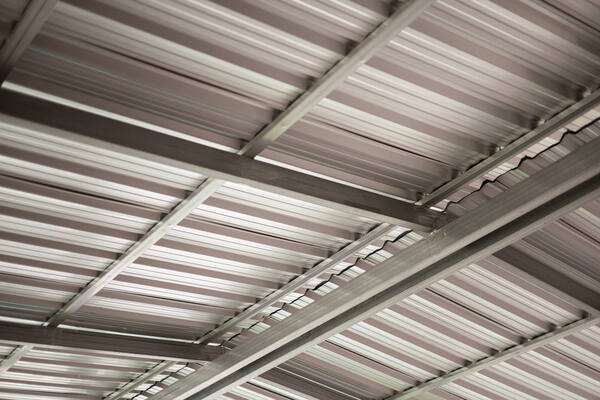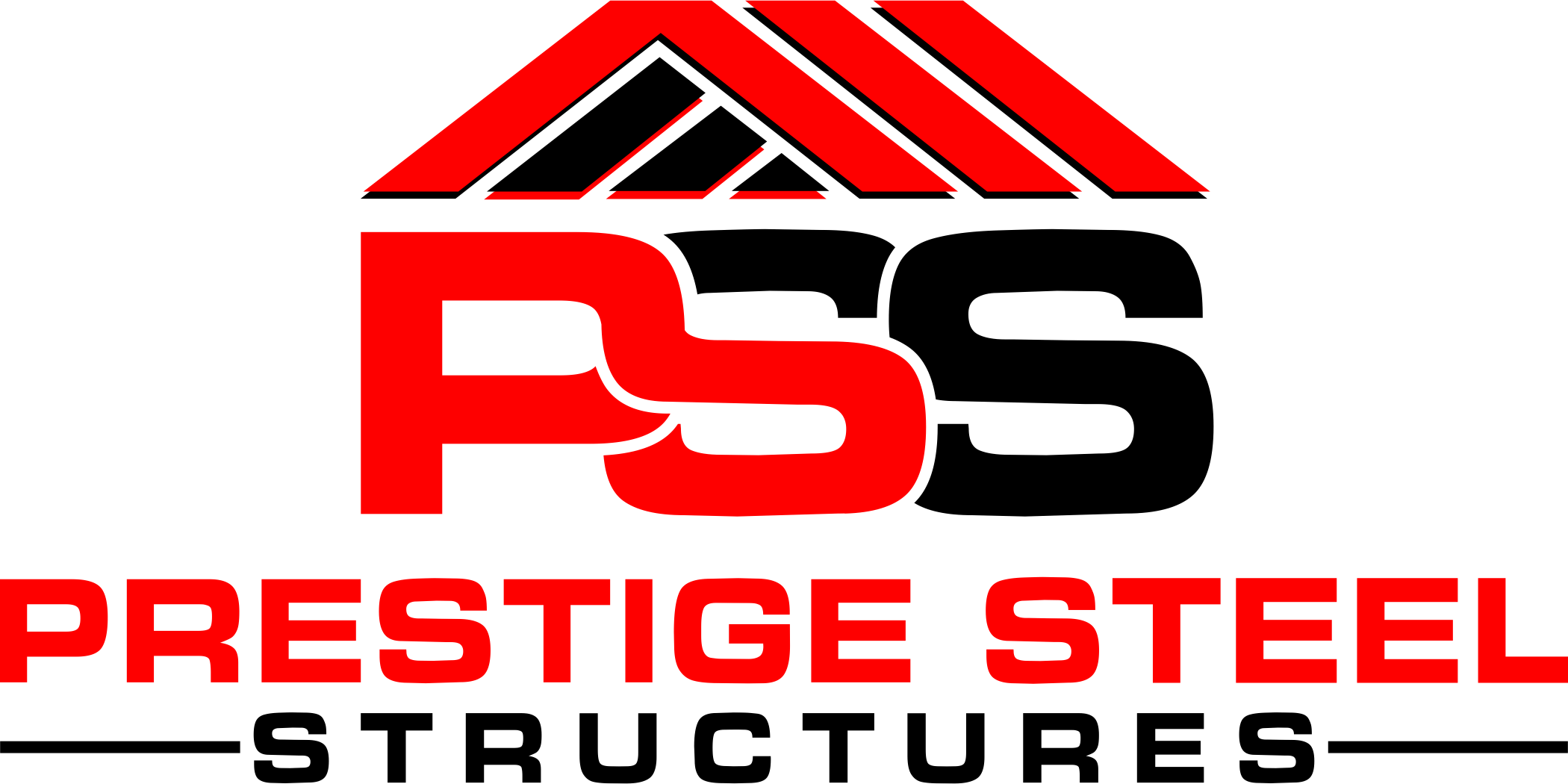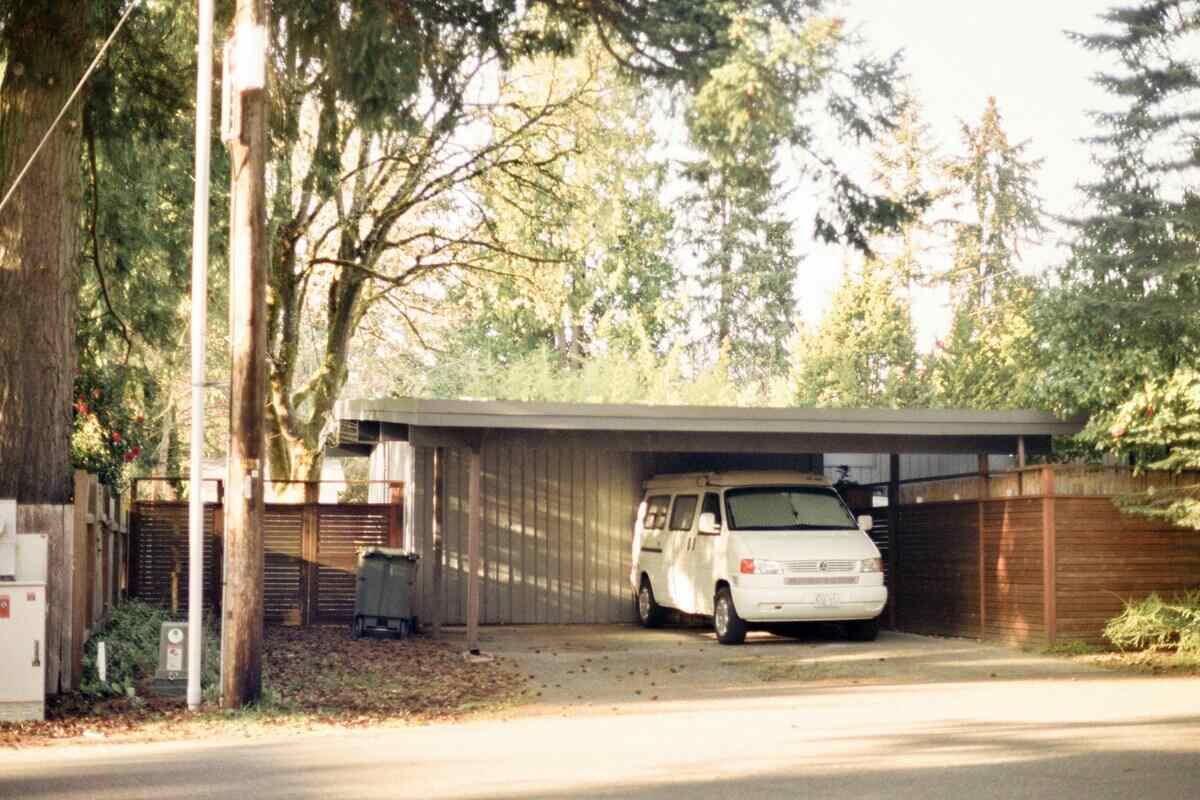Selecting the right building material for your project involves several important factors. Durability, ease of installation, environmental impact, maintenance requirements, assembly time, and overall cost all play a crucial role in making an informed decision. Whether you’re constructing Metal carports, sheds, or any other structure, the material you choose will directly affect its longevity and upkeep.
So, which material comes out on top? Metal is the clear winner! Its durability, minimal maintenance, and cost-effective nature make it the smarter investment compared to wood. Wooden structures require frequent upkeep, including sealing, staining, and repairs due to weather exposure and pest damage. In contrast, metal resists these issues, saving you both time and money in the long run.
Keep reading to explore the unique properties of both materials and understand why metal stands out as the superior choice for your construction project.

Key Material Considerations for Your Carport
Understanding the types of wood and metal used in your carport’s construction is essential for durability and longevity. Here’s a breakdown of the materials you should consider.
Engineered Wood vs. Solid Wood: Key Differences in Home Construction
Both engineered wood and solid wood play a crucial role in building residential homes across the U.S. and Canada. These materials serve as essential components in construction, with the widely used 2×4 lumber and plywood reinforcing a home’s structural integrity.
What is Solid Wood?
Solid wood, often referred to as softwood, forms the framework of a home. Builders use it for timber framing, interior partitions, beams, stringers, stud walls, floor joists, and roof joists. Milled lengthwise from trees, solid wood is cut into planks and boards, making it a reliable choice for structural support.
What is Engineered Wood?
Engineered wood consists of multiple layers of ply or veneers, cross-laid to enhance durability and strength. Plywood is a prime example, widely used in roofing, flooring, walls, shelving, and cabinetry. Manufacturers bond these layers using heat, pressure, and adhesives to create a stable, long-lasting material. Other engineered wood products include oriented strand board (OSB), medium-density fiberboard (MDF), particleboard, engineered wood flooring, glulam timbers, and finger-jointed wood. These alternatives provide flexibility, cost-efficiency, and improved resistance to warping, making them an excellent choice for various construction applications.
A Guide to Grades and Key Factors
When selecting wood for your project, understanding how it’s graded can help you make the best choice. Several factors determine wood grading, including size, defects like splits and knots, discoloration, missing edges or corners (wanes), and internal pockets. These characteristics impact both the appearance and strength of the lumber. Wood with fewer imperfections falls into higher-grade categories, often referred to as select grades.
Beyond basic grading, additional factors influence wood selection. According to Home Depot, the following properties play a crucial role:
- Texture – The feel and surface condition of wood affect its stability and its ability to absorb finishes or stains effectively. Smoother textures make finishing easier, while rougher surfaces may require extra preparation.
- Color – Wood’s color sets the tone for your project’s aesthetic. For visible applications like furniture or decor, color selection is essential. However, in structural projects where the wood remains hidden, color becomes less important.
- Density – The weight and strength of wood determine its durability. Denser wood provides better support, making it ideal for structural elements such as beams and load-bearing components.
- Grain – Each piece of wood has a unique growth pattern, ensuring no two boards look identical. When working on decorative projects, choosing the right grain helps achieve the desired visual effect. For structural applications, grain matters less, but for visible woodwork, aesthetics play a significant role.
By understanding these key wood properties, you can confidently choose the best materials for your project, ensuring both durability and visual appeal.
Understanding Metal Buildings: Steel vs. Aluminum in Construction
Let’s start with a key distinction—steel isn’t technically a pure metal. As an alloy, steel consists of iron, a metal, combined with carbon, a non-metal. Unlike aluminum, which is a pure metal, steel falls into a category of its own. However, for simplicity, we’ll refer to steel, aluminum, and galvanized steel as metals in this article, as we compare them to wood in construction.
Steel: The Leading Choice in Construction
Steel remains the most widely used metal in the construction industry. Builders prefer steel because it creates highly durable, sustainable structures that can be erected quickly and cost-effectively. Its strength, flexibility, and fire resistance make it a top choice for commercial, industrial, and residential buildings. Additionally, modern steel buildings are often made with recycled materials, further enhancing their eco-friendliness.
Aluminum: Lightweight Yet Durable
Aluminum’s unique properties make it an excellent material for construction. It is significantly lighter than steel, making it easier to transport and handle during building projects. Despite its lightweight nature, aluminum remains strong, durable, and highly resistant to corrosion, making it ideal for coastal or humid environments. Its natural ability to withstand harsh weather conditions and resist rust makes it a valuable alternative in specific applications.
Galvanization: A Protective Coating for Steel
Galvanization is a process that applies a protective zinc coating to steel by dipping it into a hot bath of molten zinc. This method effectively prevents rust and corrosion, significantly enhancing the steel’s durability. Galvanized steel buildings require minimal maintenance, making them a cost-effective and long-lasting solution.
One of the standout benefits of galvanized steel is its impressive lifespan. In rural areas, it can last over 50 years, while in urban, industrial, or coastal environments, it often exceeds 25 years. Additionally, galvanized steel speeds up construction since it requires no extra preparation, treatments, or coatings, allowing for a faster and more efficient setup. Its resilience and ease of maintenance make it a preferred choice across various industries.
Strength and Longevity
Both wood and steel provide strong and reliable building materials. For centuries, North American settlers relied on wood to construct barns, houses, and log cabins. Wood was a practical choice, as it was more accessible than transporting materials from Europe. Even today, many wooden barns over a century old remain standing, showcasing the material’s durability. However, wood is highly susceptible to moisture, which can lead to rot. It is also vulnerable to termites, fire, and extreme weather conditions.
Steel, on the other hand, offers superior resilience. It withstands harsh weather, coastal humidity, fires, seismic activity, and insect damage far better than wood. Its durability makes it a preferred choice for long-lasting and low-maintenance structures.
Efficient Installation
Installing both metal and wood buildings follows distinct processes. Metal building components are pre-fabricated off-site, requiring minimal on-site modifications. As a result, relatively unskilled laborers can handle the assembly efficiently.
In contrast, wood buildings are constructed primarily on-site, with only specific components—such as trusses, stair railings, and doors—pre-manufactured. This method demands highly skilled labor to ensure a precise and durable structure.
For those considering a metal building, it’s essential to choose a company that offers comprehensive construction services, not just building assembly. A reliable metal building provider should also handle site preparation, including grading, measuring, concrete slabbing, drainage solutions, and foundation post-hole digging. This ensures a seamless and structurally sound installation.
Durability and Low Maintenance: Why Metal Wins
Metal, particularly galvanized steel, outperforms wood in durability and maintenance. Its long lifespan makes it a superior building material, offering strength and resilience.
Unlike wood, metal buildings withstand harsh weather conditions, including rain, snow, and coastal effects, without deterioration. Steel doesn’t crack, warp, or attract insects, eliminating the need for frequent weather treatments and repainting. Prefabricated metal buildings often come with 25-30-year warranties, ensuring long-term reliability with minimal upkeep. Additionally, metal roofs don’t require wood shingles, saving you from the hassle of periodic replacements. This durability makes metal a cost-effective and low-maintenance choice for any structure.
Material Costs
Wood remains the most frequently reported material shortage in the third quarter of the year, according to the U.S. Chamber of Commerce Q3 Commercial Construction Index. Since the COVID-19 pandemic began, lumber prices have surged due to mill shutdowns, supply chain disruptions, and rising demand. Experts warn that prices are unlikely to drop significantly in the long term because of the sustained need for new home construction.
Although metal remains a pricier building material, even after the pandemic, it offers long-term value. Unlike wood, steel requires no maintenance and provides superior durability, making it a cost-effective investment over time. While the upfront costs may be higher, its resilience and minimal upkeep can lead to significant savings in the future.
Sustainability of Wood vs. Metal
Many builders and homeowners prioritize sustainability when selecting construction materials, aiming to minimize environmental impact while ensuring durability and efficiency. While wood is a renewable resource, its sustainability depends largely on responsible forestry practices. Sustainable logging and reforestation efforts help offset deforestation, but illegal logging and habitat destruction remain ongoing concerns. Additionally, processing wood into usable construction materials requires significant energy, leading to carbon emissions that contribute to climate change. Over time, wood structures may also require repairs or replacements, further increasing resource consumption. This is especially true for outdoor structures like a metal carport, which provides a long-lasting alternative to traditional wood-framed options that may deteriorate over time.
Metal, particularly steel, stands out as one of the most recycled materials globally, making it a highly sustainable choice. Modern steel buildings often contain a substantial percentage of recycled content, reducing the demand for new raw materials and minimizing environmental strain. Unlike wood, which degrades over time, steel retains its strength and integrity for decades with minimal maintenance. A metal carport, for example, resists rust, termites, and weather-related damage, making it a reliable and eco-friendly shelter for vehicles and outdoor storage. While metal production initially consumes energy, its durability, recyclability, and resistance to pests and rot contribute to a lower overall carbon footprint.
Additionally, advancements in manufacturing techniques continue to improve energy efficiency in steel production, making metal an increasingly eco-friendly option for residential and commercial construction. Whether used for full-scale homes, storage buildings, or a metal carport, steel structures offer long-term sustainability, cost savings, and reduced environmental impact compared to traditional wood-framed alternatives.
Which Material Offers More Options?
Both wood and metal offer customization options, but they differ in versatility and design flexibility. Wood provides a classic, natural look that can be easily shaped, painted, or stained to match aesthetic preferences. However, intricate wood designs require skilled labor and regular maintenance to preserve their appearance.
Metal, especially steel, offers greater structural flexibility for large-scale or modern designs. Prefabricated metal buildings allow for quicker assembly, and manufacturers can customize them with various finishes, coatings, and panel styles. Additionally, metal structures can be designed with open floor plans, maximizing space without needing interior support columns. This makes metal a more versatile choice for commercial, industrial, and residential projects requiring scalability and minimal upkeep.
Conclusion
When deciding between wood and metal for your carport or garage, consider durability, maintenance, cost, and sustainability. While wood offers a traditional aesthetic, it requires frequent upkeep, is vulnerable to pests, and deteriorates over time. In contrast, metal, particularly steel, provides superior strength, minimal maintenance, and long-term cost savings. It withstands harsh weather, resists pests, and often includes extended warranties, making it a more reliable investment. Additionally, metal structures are highly customizable, environmentally friendly, and faster to install. Whether for residential or commercial use, metal carports and garages stand out as the smarter choice. By prioritizing longevity and efficiency, you can make an informed decision that ensures your structure remains durable and low maintenance for years to come.
FAQ’s
Which carport lasts longer: wood or metal?
Metal carports last longer because they resist weather damage, termites, rot, and warping. Wood carports need frequent maintenance, including sealing, staining, and repairs, while metal structures stay durable with minimal upkeep.
Are metal carports more affordable than wood?
Metal carports may cost more upfront, but they save money in the long run. They require little to no maintenance, while wood needs regular treatments and repairs. Over time, metal proves to be the more cost-effective choice.
Which material installs faster: wood or metal?
Metal carports install faster because they come in prefabricated kits with pre-cut parts. Wood carports require cutting, framing, and finishing, which makes installation longer and more complex.
Do metal carports withstand harsh weather better than wood?
Yes, metal carports handle extreme weather better. They resist heavy snow, high winds, fire, and moisture damage. Wood carports warp, rot, and attract pests, especially in humid or storm-prone areas.
Which carport material is more eco-friendly: wood or metal?
Both materials have environmental benefits and drawbacks. Wood is renewable, but deforestation and treatments impact the environment. Metal lasts longer and is highly recyclable, reducing waste. Choosing sustainably sourced wood or recycled metal helps lower environmental impact.
Users Also Say:
What are other users’ thoughts on Metal Carports?
Cruso*****
After years without a garage, we finally installed a metal one. We spent more than expected but chose a red iron structure for maximum strength, especially in hurricane-prone areas. Now, we have a spacious garage and workshop, and it feels great to have a durable, reliable space.
Millennium**********
Metal carports provide reliable shelter and protection for vehicles, equipment, and other valuables. Made from durable steel or aluminum, they offer an affordable alternative to traditional garages. Here’s why metal carports stand out:
- Durability: Built to last, metal carports resist rust, rot, pests, and fire, ensuring long-term reliability.
- Cost-Effective: They cost less than constructing a full garage and require minimal maintenance, making them a budget-friendly option.
- Customizable Designs: Available in various sizes, roof styles, and colors, metal carports can be tailored to fit specific needs.
- Quick Installation: These structures assemble faster than traditional garages, with many models designed for easy DIY installation.
- Versatile Use: Beyond vehicle storage, metal carports work well for boats, RVs, farm equipment, and even outdoor event spaces.
- Weather Protection: They shield belongings from sun, rain, snow, and hail, offering essential protection without full enclosure.
Metal carports provide a practical and affordable way to safeguard your assets while offering flexibility and ease of use.


